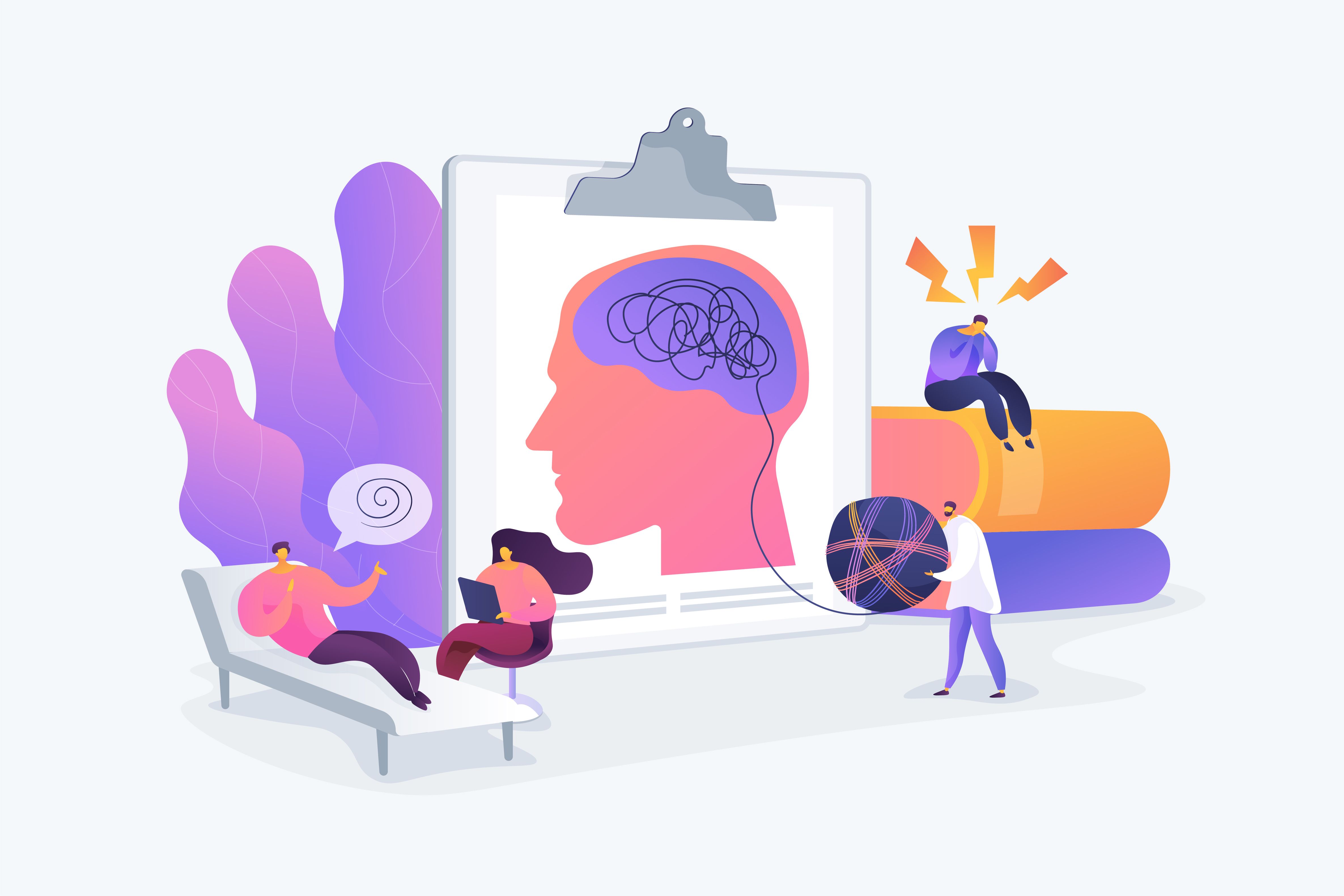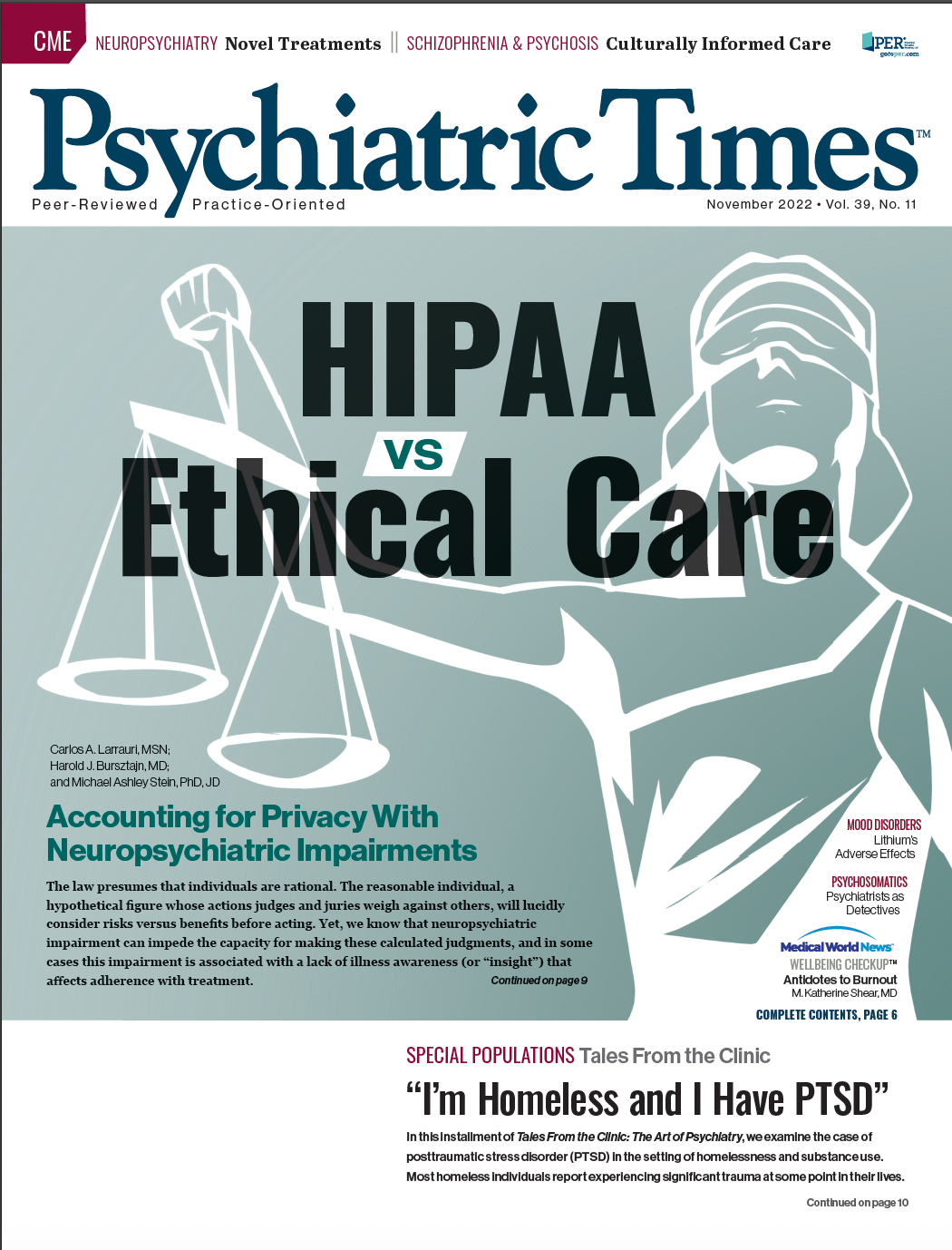Publication
Article
Psychiatric Times
Psychiatric Times™ Conference: Clinical Pearls for Treating MDD
Author(s):
Is there one state-of-the-art treatment for depression?
Visual Generation/AdobeStock

Identifying “State of the Art Treatment” for MDD
Is there one state-of-the-art treatment for depression? “No, that was the dilemma I faced in trying to prepare for this talk,” Sidney Zisook, MD, shared with attendees of the 2022 Annual Psychiatric Times™ World CME Conference held in August in San Diego, California.
“There is no state-of-the-art treatment because major depressive disorder [MDD] is such a broad, diverse, heterogeneous group of symptoms,” explained Zisook, who is distinguished professor at the University of California, San Diego, and a previous recipient of the Psychiatric Times™ Educator of the Year Award. “In fact, there are 227 possible combinations of symptoms that will allow a person to meet the DSM criteria for [MDD]. And, in addition to the symptomatic heterogeneity, there are a host of other issues that affect this: severity—mild symptoms versus very severe problems; clinical features—are there anxious features, atypical features, or melancholic features? All of these may lead us to different approaches that we may take with that patient.”
Because of this, there are a number of issues and features that should be assessed for each patient. Zisook discussed a recent review that revealed 14 key areas: symptom profile, clinical subtypes, severity, neurocognition, functioning and quality of life, clinical staging, personality traits, antecedent and concomitant psychiatric conditions, physical comorbidities, family history, early and recent environmental exposures, protective factors, resilience, and dysfunctional cognitive schema.1
Thus, the best care practice—which is really what makes for state-of-the-art treatment for MDD—relies on a thorough history, Zisook said. “A really thorough history begins with lab studies, physical exam, etc,” he said. “But the initial assessment is not enough. We want to repeat the workup for patients who aren’t doing well over time.”
“I can’t tell you how many times in my career, when I redid my initial assessment 6 months down the line and somebody wasn’t having a good response, how different that history was and how I now—for the first time—learned about their drinking history and the cocktails they had every night. Or their early life trauma that was very much affecting their day-to-day life as an adult, etc. So not only do you do good assessment to begin with, repeat it intermittently as you have a better relationship with the patient to get a better, fuller picture of who they are,” Zisook said.
This includes checking for cooccurring conditions and ensuring treatment for those conditions, too, said he explained.
Similarly, he said it is important to use measurement-based care to inform decisions. “Several studies2 have found that if you measure symptoms, if you measure side effects, even with a global side effect measure along the way, share those with the patients, and develop a diary of symptoms and tolerance, you’ll actually end up with better results,” Zisook reported.
Then, clinicians should dip into the wide variety of choices from what he called the “2022 Antidepressant Tool Kit.” In terms of medication choices, Zisook told attendeed all FDA-approved antidepressants (ie, tricyclics, monoamine oxidase inhibitors, selective serotonin reuptake inhibitors, serotonin-norepinephrine reuptake inhibitors, serotonin modulators, and atypical antidepressants, and novel nonmonoamines) are equally effective with some differing adverse effects.
When discussing medication treatment personalization, the topic of pharmacogenomic testing often comes up, said Zisook. “There was a lot of excitement about pharmacogenetic testing a few years ago. A lot of that excitement has died down because it hasn’t really proven to have a dramatic impact on our ability to personalize medications,” he told attendees.
However, testing can provide information on the genes involved in the metabolism of antidepressants (eg, CYP2D6, 2C19, 1A2, 2C9, 342, and 2B6), how the drug may be metabolized in patients, and whether the medications should be used as usual, with caution, or with extra caution and increased monitoring. “If they [patients] are a very poor metabolizer, they may end up with a very high dose of the medication that you’re providing in their system, and they may be more prone to significant side effects adversity and tolerance, etc. You may need to go slower or lower or avoid certain medications,” he advised attendees.
Brain stimulation options (ie, bright light therapy, electroconvulsive therapy, transcranial magnetic stimulation, and vagus nerve stimulation) are also effective strategies in the tool kit, he noted.
Furthermore, Zisook reminded conference attendees not to overlook the potential of psychotherapy as part of the treatment strategy.
“A recent survey showed only about 20% of psychiatrists do psychotherapy in their offices, even though we all know that psychotherapy plus meds is better than meds alone.”3
Lifestyle aids, like exercise, are also important and should be considered as part of the treatment plan, he noted. “I tell all my patients, ‘When you’re feeling more energetic, when you’re up to it, start exercising. Get out of the house, take advantage the sunlight.’ They may not be able to do it initially. But I plant the seed early on and go back to it.”
The therapeutic alliance is key to success, Zisook said, and sometimes may be overlooked. He shared results from a National Institute of Mental Health study that found psychiatrists can “augment the effects” of both the medications as well as placebo.4 “Those patients who had the best results even with placebo were the ones that maximized the nontherapeutic, nonspecific factors that are common to psychotherapy that’s effective, like developing a therapeutic alliance: getting a trustful, empathetic, and collaborative relationship with a patient,” he said.
“Take advantage of those factors—and yourself,” Zisook advised. “This may mean spending more than 20 minutes with a patient. It may mean seeing their family. It may mean talking about their life independent of their depressive symptoms. But that relationship is critical in helping many of our patients get better.”
Zisook concluded by reminding conference attendees of their network of support and the importance of engaging colleagues as needed.
“Never worry alone,” he said. “It’s always so nice when you’re treating people with depression—especially difficult to treat depression—to have a colleague, other people that you can work with, you can consult with, to talk about patients. And I’ve always found that a critical part of my overall practice.”
References
1. Maj M, Stein DJ, Parker G, et al. The clinical characterization of the adult patient with depression aimed at personalization of management. World Psychiatry. 2020;19(3):269-293.
2. Rush AJ, Sackeim HA, Conway CR, et al. Clinical research challenges posed by difficult-to-treat depression. Psychol Med. 2022;52(3):419-432.
3. Zisook S. 8 key issues in the world of major depressive disorder. Psychiatric Times. 2022;39(7):21-23.
4. McKay KM, Imel ZE, Wampold BE. Psychiatrist effects in the psychopharmacological treatment of depression. J Affect Disord. 2006;92(2-3):287-290.







